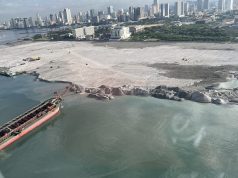Editor’s note: Cesar Polvorosa Jr. is a business school professor of economics, world geography, and international business in Canada. He is also a published writer in economics, business, and literature. His article “Philippines, the next economic tiger?” was published by Interaksyon last March 31.
At first glance, the Philippines and India are highly distinct from each other especially from the perspective of geography. The Philippines is an archipelago in Southeast Asia with population of 107.7 million. On the other hand, India is the colossus of South Asia with population of 1.24 billion (July 2014 est. CIA World Factbook). There are likewise important differences in ethnicity, religion, and history of both countries.
Regardless of the dissimilarities in the geographies, society, and cultures of both the Philippines and India, there are significant parallelisms in the economic and development situation of both countries. Ultimately, it begs the question: Will the similar economic path pursued by both countries lead to sustained economic growth and development?
The Philippines with a GDP per capita (PPP) of $4,700 is ahead of India’s $4,000 (2013 est. CIA World Factbook) as well as in the UN’s Human Development Index (Philippines’ 114th vs. India’s 136th rank). Both are classified as countries with medium human development regarded as likely to achieve the highly developed status in the foreseeable future. India is one of the BRICs (Brazil, Russia, India, and China), all huge countries deemed to have great economic potential. Recently, the TIMP (Turkey, Indonesia, Mexico, and the Philippines) had been identified as the next group of prospective economic powerhouses.
The diaspora and the local economies
By reasons of lack of opportunities in the homeland, the historic ties with Western colonizers, useful skills, English language proficiency, and the ease of travel in the contemporary era of globalization, both the Philippines and India have large overseas communities. The Indian diaspora has a longer history, is particularly substantial, and widespread at over 25 million worldwide. The Philippine diaspora though smaller at over 11 million is much bigger than India in proportion to the size of the country’s population.
Filipinos and Indians often work together in similar occupations and work places – as construction workers, engineers, bank managers, accountants, fast-food workers, maintenance services staff, doctors, nurses, IT professionals, technicians, seafarers, entertainers, etc. With such huge overseas communities of their nationals the economies of both countries stand out as the biggest recipients of remittances. India is the world leader in remittance flows, receiving $70 billion in 2013 while the Philippines ranks 3rd with $25 billion (China ranks 2nd, World Bank). With a bigger proportion of its population residing and working abroad, Philippine remittances comprise about 13.5 percent of the country’s GDP, far exceeding the 4 percent for India. Thus, overseas remittances provide an economic lifeline to numerous Philippine and Indian families. They fuel especially for the Philippines a consumer boom that supports local industries. Remittances of overseas Filipino workers (OFWs) build up foreign exchange reserves that help to shore up the country’s BOP position.
Global niche in BPO
Both the Philippines and India have carved out their competitive niches in the global economy in services specifically as the leading business process outsourcing (BPO) providers. Their competitive advantages in this fast growing and strategic sector are from their sizable educated labor force, managerial talents, wide English proficiency skill, technical knowhow, and relatively low operational costs.
For the Philippines, services, which include the rapidly expanding BPO providers, comprise 57 percent of GDP (2013). The Economist in 2012 reported that “the sector employs 638,000 people and enjoys revenues of $11 billion, about 5 percent of the country’s GDP. In 2011 the Philippines even overtook India, long the biggest call-center operator in the world, in “voice-related services.” The country now employs about 400,000 people at call centers, India only 350,000.” It has been reported by the Business Processing Association of the Philippines (BPAP) that the information technology and business process management (IT-BPM) and global in-house center (GIC) industry in the Philippines has grown at an annual rate of 30 percent over a decade, exceeding the growth of the global offshore services market. The industry has also diversified in breadth, scale, and complexity. The Philippine industry is targeting revenues of $25 billion and 1.3 million direct employees by 2016. According to the BPAP, the Philippine IT-BPM and GIC industry will account for over 10 percent of the global IT-BPM market by achieving these targets.
The services sector of India accounts for 66 percent of its GDP in 2013 and provides employment to 27 percent of the work force and is rapidly expanding. India’s IT and BPO providers are among the fastest growing. The Financial Express reported that as of 2012 around 2.8 million people work in the Indian outsourcing sector with annual revenues of $11 billion or around 1 percent of GDP. It is expected to directly employ 4 million by 2015.
In the Tholons’ 2013 Top 100 Outsourcing Destinations report, Indian and Philippine cities dominate the top 10. Manila and Cebu are ranked #3 and #8 respectively while the remainder of the top 7 are taken up by Indian cities such as Bangalore (#1) and Mumbai (#2).
What had been the impact of these growth drivers as well as other sectors on the overall performance of the Philippine and Indian economies? What relevant structural issues arise in the course of economic growth and development over several years?
Economic outcomes and concerns
After years of anemic growth the Philippine economy improved to a respectable average expansion of 5.7 percent from 2003 to 2007. The Philippine economy rebounded strongly from the financial crisis of 2008 to grow at an average of 6.3 percent during 2010-13. The growth tapered off to 5.7 percent in the 1st quarter of 2014 in the wake of the devastation of typhoon Haiyan. It is the robust growth during the administration of Noynoy Aquino from 2010 that have led to rosy predictions about the Philippines as the next economic tiger of Asia.
The exuberance over the impressive Philippine economic growth rates as predictor of future economic success must be tempered with cautious optimism as it had been too recent and the country’s past had been characterized by a boom and bust cycle. A major concern is the lack of inclusiveness to the growth which imperils as well its long term sustainability.
Philippine economic growth has appeared to reinforce the age old inequalities of the country by disproportionately benefitting its elite. Despite a few years of rapid growth, poverty is persistently about 28 percent of the population. Unemployment marginally dipped to 7 percent in April 2014 though no declining trend had been established and underemployment is at an alarming 19 percent. The inflation rate as of May 2014 at 4.5 percent is the highest in the past 2.5 years and may augur the tightening of monetary policy and a moderation of economic growth. The Philippines has a high income disparity with Gini Index of .43. This highly uneven development path that the Philippines is tracking if left unresolved aggravates poverty levels and fuel wide spread resentment that can stall economic growth and ultimately trigger sociopolitical upheaval. Even the IMF for so long the bastion of economic orthodoxy that espouses “trickle-down economics” (implying a tolerance for inequality) has warned about the adverse consequences of inequality.
India faces similar economic issues. Following deregulation and major reforms of 1991, economic growth progressed at a rapid clip and India soon became one of the global economy’s stellar performers but unemployment remains stubbornly high. The economy has decelerated to below 5 percent average increments in 2012-13. The 2013 estimates of Indian unemployment rate is 8.8 percent combined with an uncomfortably high inflation of 9.6 percent (CIA World Factbook).
There is no doubt that compelling progress had been achieved particularly by India during the past decades especially as it was one of the poorest countries for much of the 20th century. Back in 1980 India had a per capita income of only $271 compared to $685 of the Philippines. The income gap between the two countries has narrowed similar to the relative positioning of the Philippines with many other high performing countries during the 1980s and 1990s. The Philippines had only recently turned the corner in becoming the economic star of Southeast Asia.
Over the years the combination of perennially poor public finances, corruption, and public sector inertia has likewise resulted to a severe infrastructure deficit in the form of decrepit roads and bridges, poor mass transport system and most of all, costly and inadequate energy generation. Both countries are notorious for long and widespread electricity blackouts that affect business and households making industry and manufacturing uncompetitive and unattractive. Esher Prasad of Cornell University noted that India skipped manufacturing by default due to such factors as high power cost. Inadequate and inefficient infrastructure constrains the supply side of the economy that triggers inflationary pressures. Uncompetitive manufacturing has contributed to underperforming export sectors of the Philippines and Indian economies. Remarkably, for 2013 the ratio of their exports to GDP is about the same with Philippines at 17.4 percent and India at 17.8 percent.
The rapid growth of the Indian economy for the past 20 years and its recent slowdown demonstrate that while progress can be achieved on many fronts, the failure to address structural deficiencies including resistance to reforms by vested interests can continue to disenfranchise the majority and limit growth. This is a cautionary tale for the Philippines given the similar dynamics of the Philippine and Indian economies. There is an historic opportunity for the Philippines to apply these lessons as it ascends to a higher growth phase.
On Wednesday, June 18, Part 2, What to do next.









